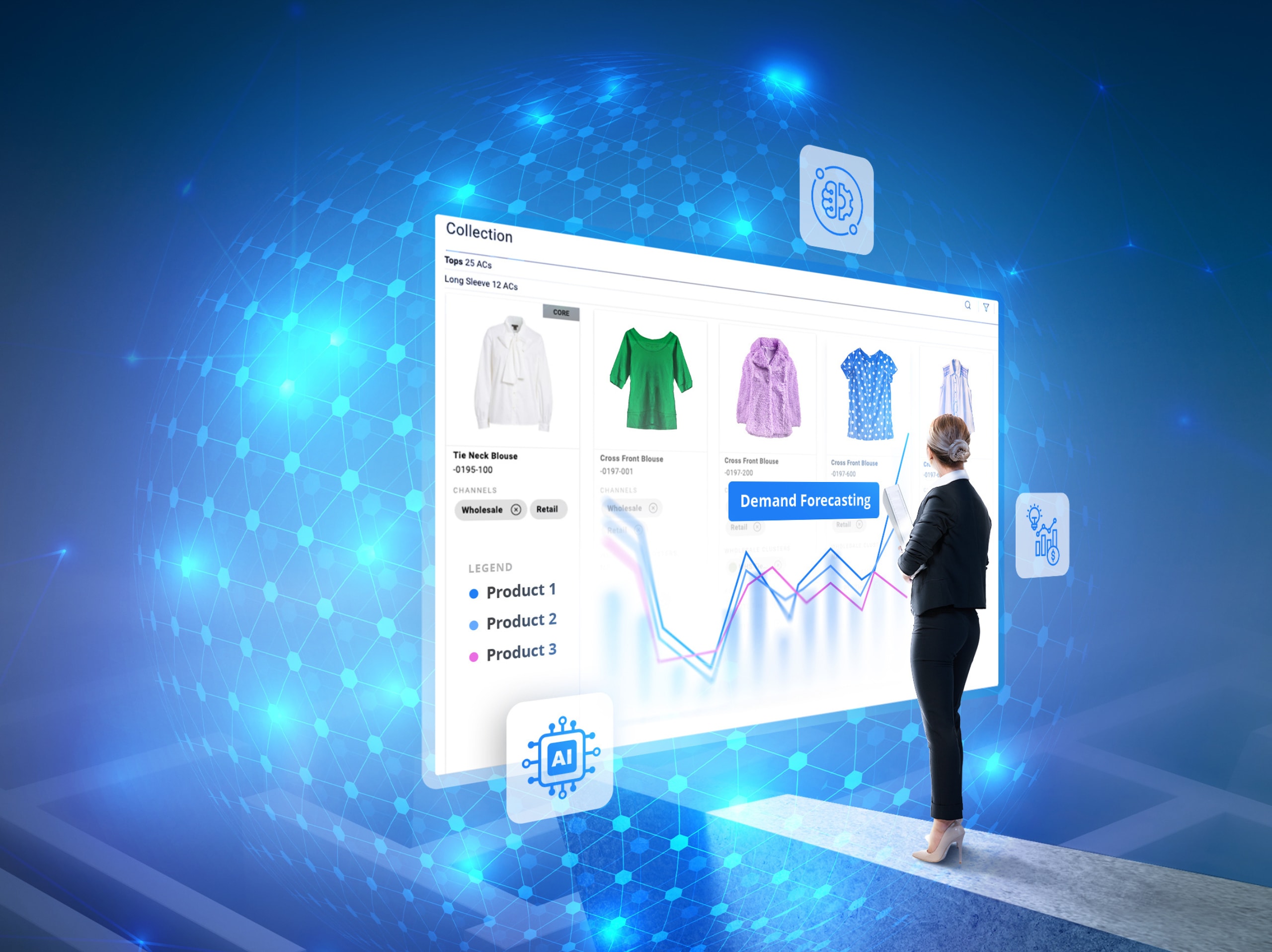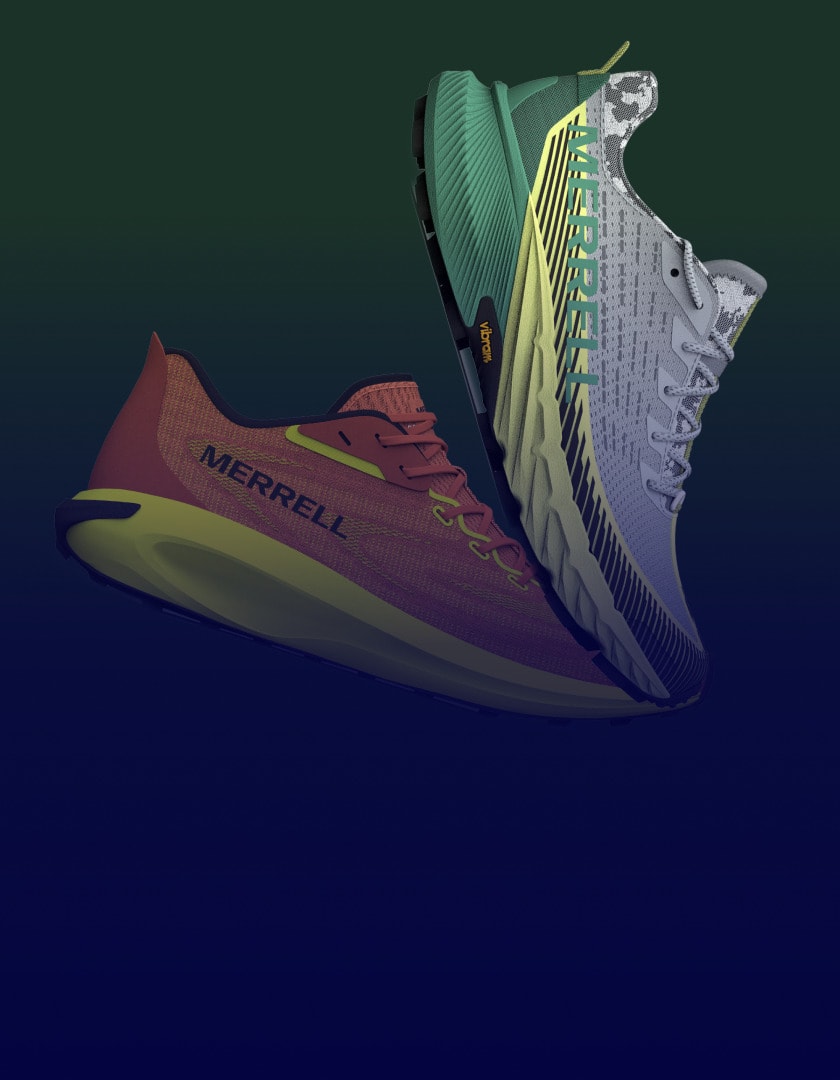How to Master AI Demand Forecasting In Retail

As the costs of producing products continue to climb and pressure mounts on every SKU to perform, retail demand forecasting has never been more essential. Missing the mark on a trend or miscalculating seasonal demand can cause a costly ripple effect that can severely eat into profits.
Read on to find out how AI demand forecasting can enhance the speed and accuracy when predicting demand for each SKU.
What is retail demand forecasting?
Retail demand forecasting is an integral part of any brand or retailer’s planning process, anticipating consumer needs to stay in line with their future buying behavior. In the past, this has translated into brands and retailers hoping they’ve properly navigated the myriad of variables such as weather, events and emerging trends while keeping a firm eye on what competitors are doing. This is based on a mixture of industry knowledge – often referred to as an art, although today this is no longer sufficient.
Predictions haven’t all come out of thin air, though. Forecasters typically analyze a variety of data points to estimate the right inventory mix, including where to stock inventory and in what quantity. But, to achieve a high gross margin return on investment (GMROI), there is an ever increasing need to generate a more accurate forecast for the demand of each SKU in every channel and location, and this requires more than a few data points.
What is the importance of retail demand forecasting?
Inventory is the most significant investment a brand or retailer will make each season, and it isn’t a one-time expense. An inaccurate demand forecast can lead to expensive consequences for businesses.
One consequence of demand forecasting gone wrong is unwanted inventory, which ends up as deadstock and generates carrying and storage costs, tying up precious cash flow. To prevent such an unfavorable outcome, those that have made a misstep in their demand forecasting often resort to heavy discounting and blanket markdown strategies to clear shelves. However excessive discounting can result in diminished margins as well as projecting a damaging image to consumers of a brand that inevitably resorts to lowering prices. If this becomes a regular occurrence, customers simply wait for sales before purchasing full price items.
Demand forecasting not only helps prevent overstocks but done right it can also stop understocking popular items. No brand wants to lose out on sales because of out-of-stock items, or deal with the repercussions of unhappy customers who can’t find the products they are looking for when they want them. It’ll quickly lead to consumers moving to competitive brands. Simply put, demand forecast accuracy is crucial in aligning your supply with customer demand.
What are the aspects of retail forecasting?
Retail forecasting combines multiple business functions to create a data-driven strategy that works across both pre-season and in-season. This strategy enables merchandising teams to quickly respond to changes with agility. In general, retail forecasting combines four key areas.
Historical data of past sales is typically used to predict future sales. Past sales data looks at the trends, seasonality and market fluctuations to better guess future customer demand. However, as everyone knows, changes happen, and past data alone is no longer enough to accurately reflect future demand.
Demand forecast focuses on predicting the popularity of products so that there is the right amount of inventory to meet interest without ending up with leftover inventory at the end of the season. Getting close to the right quantity of units per product that customers are likely to buy provides brands and retailers with the highest gross margin return on investment.
How do you balance how much inventory you need to buy to satisfy customers versus not holding too much stock and incurring excessive costs? This is especially true for omnichannel retailers who need to keep inventory both agile and varied to meet increasingly demanding consumer expectations. Focusing on the quantities of SKUs is an essential part of the planning process. AI-driven inventory planning looks at several complexities to determine the right allocation of goods across countries, regions and individual stores to support optimization of inventory and support merchandisers with control of stock.
Promotions are an essential part of any selling cycle. However, they require an accurate planning approach to effectively help drive sales in the right places, at the right time. Running promotions on the wrong items, at the wrong time, can be a costly error. Knowing which products need the push of a pricing tweak to create demand – right down to the specific color and size – is instrumental in increasing margin. It requires accurate and timely data analysis to make such informed decisions.
Demand Forecasting Constraints in the Digital Era
As collections become larger, with some companies carrying tens of thousands of SKUs, it becomes more challenging to factor in the hundreds of variables that play a role in accurate demand forecasting. Some of the major factors to consider when aiming for accurate demand forecasting include:
Some elements are predictable. Everyone knows what holiday seasons will need to be planned around, but what about any special global events that have a major impact like the World Cup or The Olympics? Less impactful, yet still important to consider are local events. Is a particular city a destination for summer musical concerts where consumers will demand shelves are stocked with festival attire? Or perhaps a beach location popular with tourists must ensure summer essentials like sunscreen, hats and sandals are easily available and readily restocked?
Planners should also keep an eye toward short-term weather forecasts, an unexpected twist in the weather can dramatically shift consumer demand, particularly in the fashion retail industry. What if there’s an unexpected late autumn, consumers may be slow to buy warmer items from a new autumn/winter collection at full price while still basking in summer temperatures. Or a washout summer will see consumers shun hats and sunglasses but demand raincoats and umbrellas.
Although there are some general seasonal trends, there are too many other factors for a human team to consider when analyzing thousands of SKUs. AI can fill in these gaps.
What’s the latest consumer trend, or what trends have competitors succeeded or failed with? Looking at external factors from regional interests to national trends is important, but in the digital-centric world, such factors move faster than some brands can keep up with.
Another external factor essential in accurate demand forecasting is what competitors are up to. How are they translating trends into their product mix, when and which items are they discounting and at what percentage. All these factors are incredibly important when trying to build accurate forecasts for each item in your own product range.
Making the right business decisions has been much more challenging in an omnichannel universe where customers are expecting a wide product variety offering. Manually trying to take all these variables into consideration amounts to data overload and will only lead to inaccurate projections.
It’s Now Crucial for AI Demand Forecasting
AI offers a new solution to the common pitfalls that have sabotaged successful forecasting efforts. It enables teams to better anticipate future customer demand to stay ahead of the competition.
With so much at stake, businesses must be employing AI to deal with the ever-growing complexities to forecast accurately but it’s not a solution to be feared. AI paired with a human-led approach, combining both art and science promises to automate and speed many tasks for thousands of SKUs to bring greater efficiency and accuracy to a process typically plagued by guesswork and inaccuracies.

- Gain actionable insights: Predictive models enable teams to spot demand patterns that typically go unrecognized by manual efforts of teams. This means an enormous amount of data can be analyzed and actioned in just a short amount of time.
- Move from reactive to proactive: This is incredibly important when it comes to facilitating quick adaptation to market trends and consumer preferences.
- Be more efficient: AI frees teams to focus on strategic initiatives rather than being bogged down in manual tasks.
- Better predict demand: When you can predict demand, you can better plan re-stocks, quickly manage existing stock, and make more accurate and efficient inventory decisions.
- Improve customer satisfaction: With AI demand forecasting, brands and retailers can ensure the right items are stocked in the right place and at the right time to better serve customers.
- Increase profits: Increased accuracy in demand forecasting allows teams to effectively manage the supply and demand and stop costly mistakes like under or overstocking products.
Centric Software has AI demand forecasting solutions
Centric Software® offers solutions that enable teams to move from backward facing decision-making and guesswork to a more precise and future-focused analysis that utilizes AI capabilities to drive informed data-driven decisions.
Centric Planning enables teams to efficiently predict stock requirements, drive better commercial decisions with detailed analysis and avoid holding high levels of inventory to maximize profitability.
While Centric Pricing & Inventory™ utilizes AI to automate and optimize pricing and inventory decisions for each SKU no matter the location or channel.
Better predict and influence demand, sell more with less inventory, reduce discounting and accelerate growth and margins by better aligning customer demand with accurate supply. Learn more about Centric Software’s AI demand forecasting and planning solutions.








